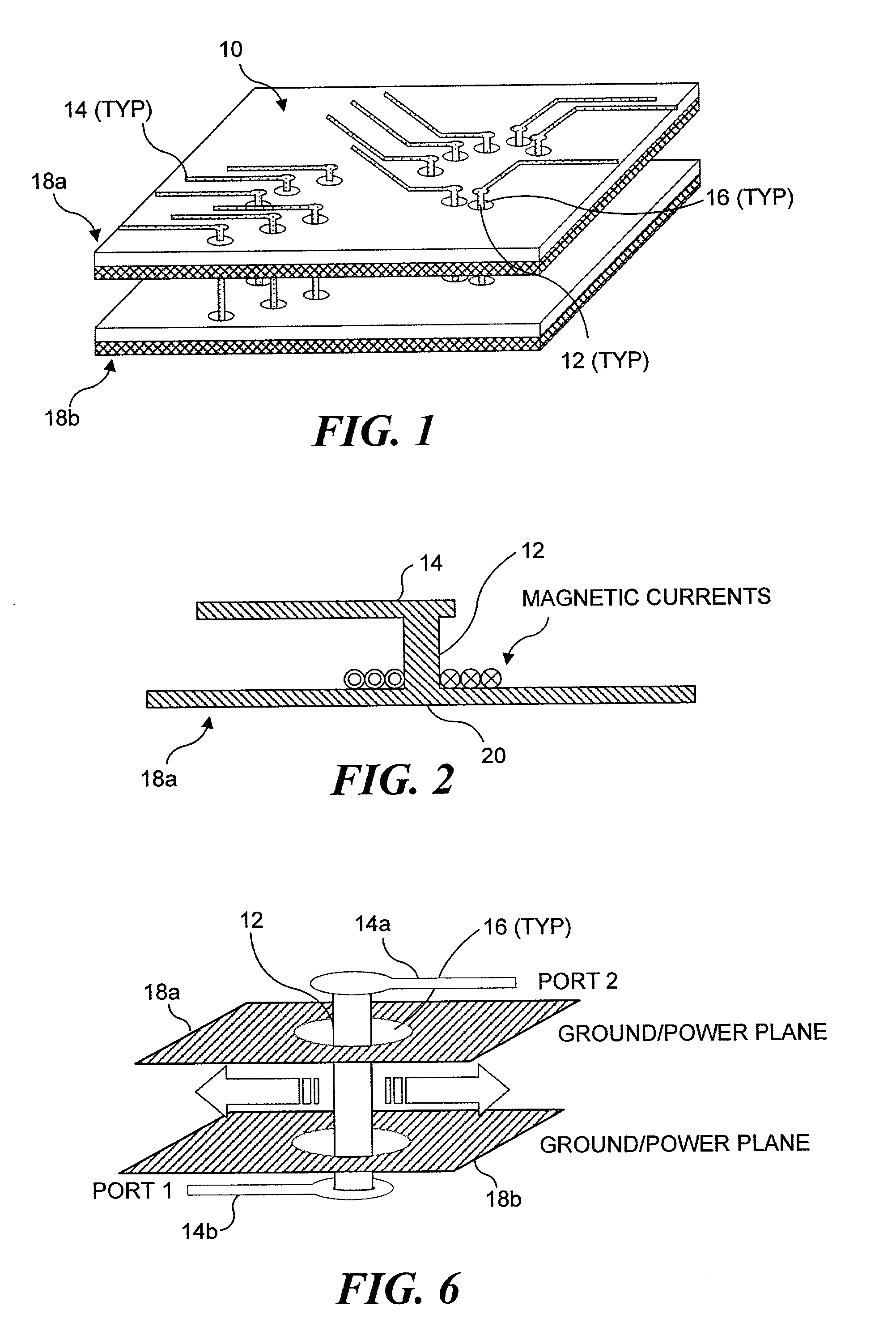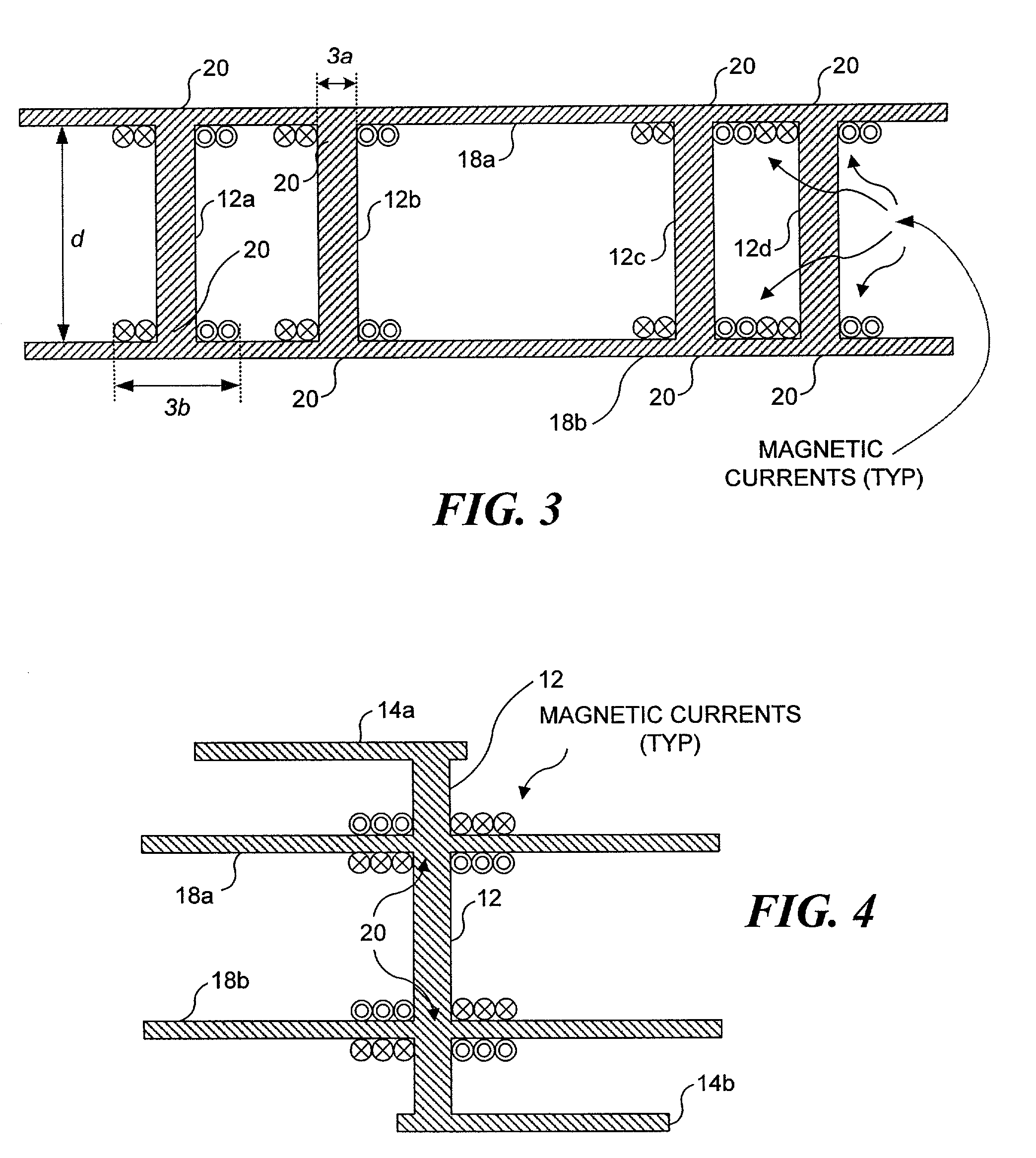Methods for modeling interactions between massively coupled multiple vias in multilayered electronic packaging structures
a multi-layered electronic packaging and interaction technology, applied in the field of numerical simulation of reflected, transmitted, coupled signals in respect of multi-layered structures, can solve the problems of high densities, considerable design problems, and fast simulation of packages, and achieve rapid and accurate simulation of coupling effects, easy integration into a system simulation, and accurate results.
- Summary
- Abstract
- Description
- Claims
- Application Information
AI Technical Summary
Benefits of technology
Problems solved by technology
Method used
Image
Examples
Embodiment Construction
Overview of the Present Invention
[0042]FIG. 1 schematically illustrates a multilayered electronic package 10 with multiple parallel, or nearly parallel, conducting ground and power planes that are separated by dielectric substrates. A plurality of via structures 12 are clearly shown connecting together traces 14 residing in / on different layers or planes. Each via passes through a corresponding aperture 16. The layered geometry includes matched ground and power planes 18a and 18b, defined by metallic layers separated by dielectric layers.
[0043]Consider the problem of modeling the dynamics of traces 14 connected to vias 12. Each via 12 passes through a corresponding aperture 16 in ground / power planes 18a and 18b of FIG. 1. For each matched pair of ground / power planes, the paired planes will form a parallel-plate waveguide (i.e., ground / power plane 18a forms a first parallel-plate waveguide, and ground / power plane 18b forms a second parallel-plate waveguide). By using the equivalence p...
PUM
 Login to View More
Login to View More Abstract
Description
Claims
Application Information
 Login to View More
Login to View More - R&D
- Intellectual Property
- Life Sciences
- Materials
- Tech Scout
- Unparalleled Data Quality
- Higher Quality Content
- 60% Fewer Hallucinations
Browse by: Latest US Patents, China's latest patents, Technical Efficacy Thesaurus, Application Domain, Technology Topic, Popular Technical Reports.
© 2025 PatSnap. All rights reserved.Legal|Privacy policy|Modern Slavery Act Transparency Statement|Sitemap|About US| Contact US: help@patsnap.com



